
OR
#Editorial
Mustang disaster- A wake up call
Published On: August 16, 2023 07:37 AM NPT By: Republica | @RepublicaNepal
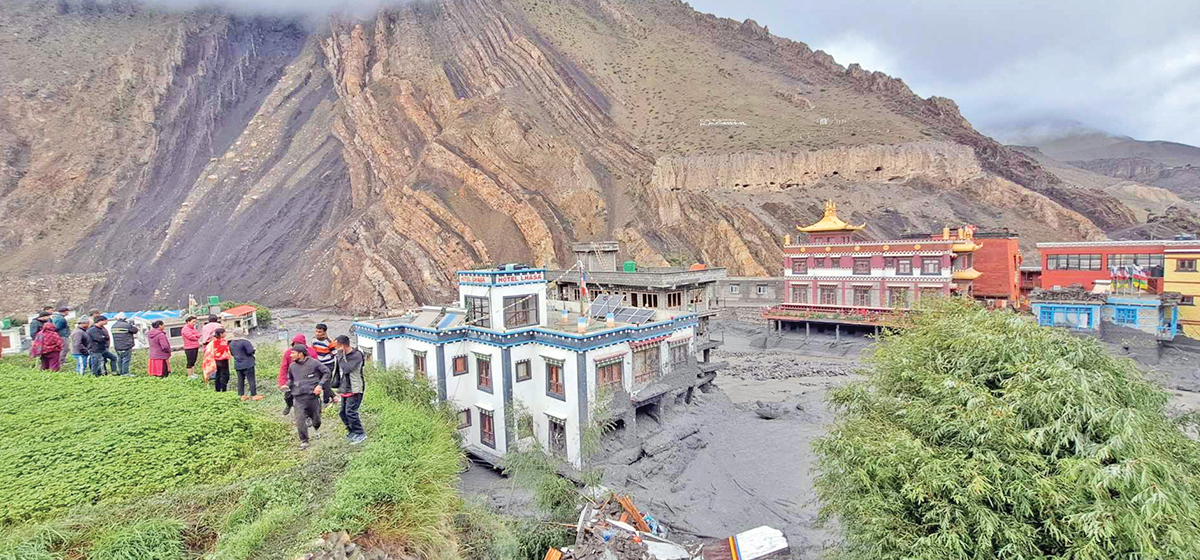
The unexpected surge in heavy rainfall and subsequent floods in the traditionally arid regions of Mustang and Manang in recent years has highlighted a pressing need for proactive and transformative adaptation strategies to protect both human lives and vital infrastructure. The flood that recently devastated Kagbeni, a major religious and tourist destination en route to the renowned Muktinath temple, has brought to the light an alarming trend that demands urgent attention from government agencies concerned with disaster management and climate resilience. The distinctive rain shadow status of Mustang and Manang, characterized by limited rainfall due to their geographical location, has been disrupted by a gradual increase in heavy rains and flooding. Experts have been grappling with the underlying causes of this perplexing phenomenon, prompting debates about whether it is a result of the ongoing climate crisis or other contributing factors.
The flood in Kagbeni, a picturesque village that holds religious significance and attracts tourists from around the world, was a tragic reminder of the region's newfound vulnerability. The destruction caused by the flood, which demolished structures including houses, hotels, temples, ashrams, schools, and police stations along the path to Muktinath, serves as a wake-up call to the unprecedented threat facing these communities. This calamity evokes memories of the devastating Melamchi flood that struck the region merely two years ago. While Kagbeni was engulfed by the torrents of what is typically a modest river, the severity and rarity of such an event are deeply concerning. The recurrence of these disastrous floods underscores the urgency of taking decisive action to prevent further devastation. The destruction in Mustang and Manang, both areas usually sheltered by towering mountains, highlights the shifting and increasingly unpredictable nature of weather patterns in the region. The Department of Hydrology and Meteorology reported a record-breaking 25 mm of rain in the 24 hours leading up to the flood. The department's Flood Forecasting Division bulletin explained that landslides in the upper coastal area obstructed Kagkhola, causing water accumulation that eventually burst, triggering an unexpected torrent of debris and floodwater.
While the exact cause of this trend remains uncertain as experts have offered varying perspectives, the rarity of such occurrences cannot be ignored. In light of these alarming developments, urgent and coordinated efforts are required from government agencies responsible for disaster management and climate resilience. As a newspaper, we join experts in emphasizing the necessity of conducting a comprehensive study to identify vulnerable zones within high mountain regions prone to heavy rains and flooding. The recently issued National Framework for Climate-related Damage-2021 by the Government of Nepal underscores the importance of integrating potential disaster risks into development initiatives, urban planning, and settlement expansion. The increasing vulnerability of Mustang and Manang to heavy rains and flooding demands immediate attention and action from government agencies. These unprecedented events serve as clear indicators of the urgent need for proactive adaptation strategies that prioritize the safety of human lives and the preservation of crucial infrastructure. As the climate crisis continues to impact the world, it is imperative that the government takes decisive steps to safeguard these vulnerable communities and ensure their resilience in the face of changing weather patterns.
You May Like This

What caused the unprecedented flood in Mustang?
KATHMANDU, Aug 15: Mustang and Manang, regions known for their rain shadow status due to limited rainfall, have been grappling... Read More...

FLOOD ALERT: Chure, Mahabharat range likely to experience flood and landslides
KATHMANDU, July 1: Through a notice, the Department of Hydrology and Meteorology has issued an early warning notice urging residents... Read More...

Ford organizing Upper Mustang adventure
KATHMANDU, April 6: Ford is organizing a seven-day Ford Upper Mustang Adventure in partnership with Yeti Travels. ... Read More...
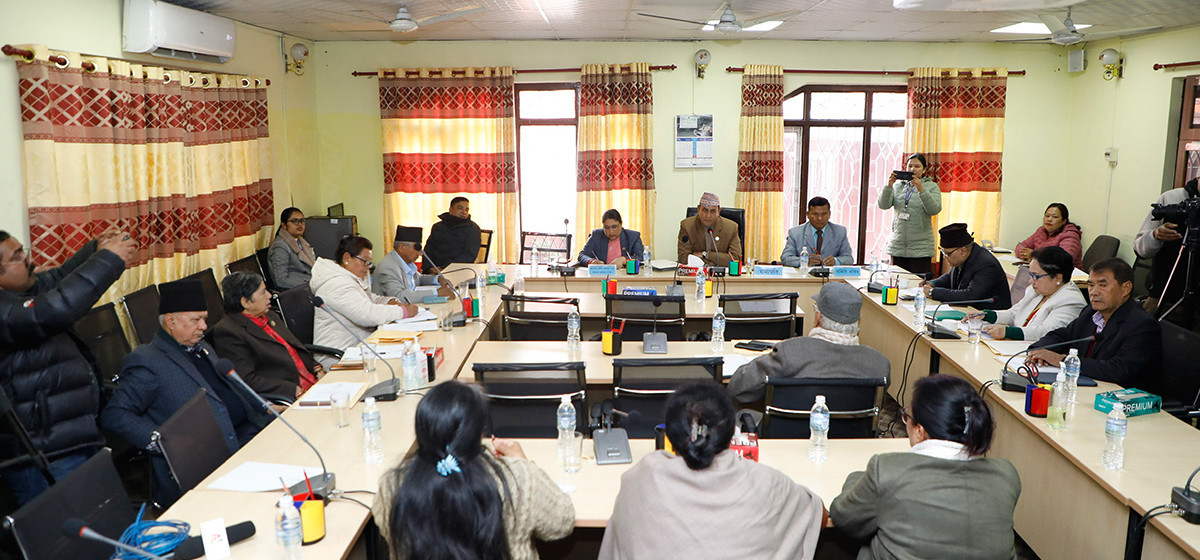
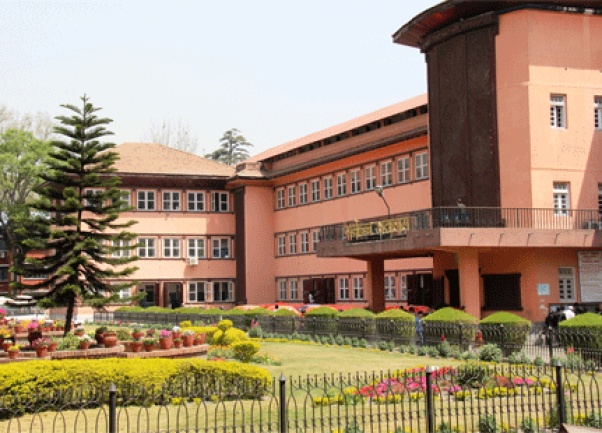
Just In
- Minister Sharma: Govt is committed to protecting press freedom
- Govt to provide ‘MMS’ to pregnant women and mothers in 10 districts
- Four parliamentary committees holding meeting today
- Turkey halts all trade with Israel over military actions in Gaza
- New York Writers Workshop and Himalayan Literature Festival to kick off on May 22
- SC summons Timilsina to record statement
- 31st World Press Freedom Day being observed today
- Nepal will need an investment of Rs 6.1 trillion to produce 28,500 MW of electricity by 2035




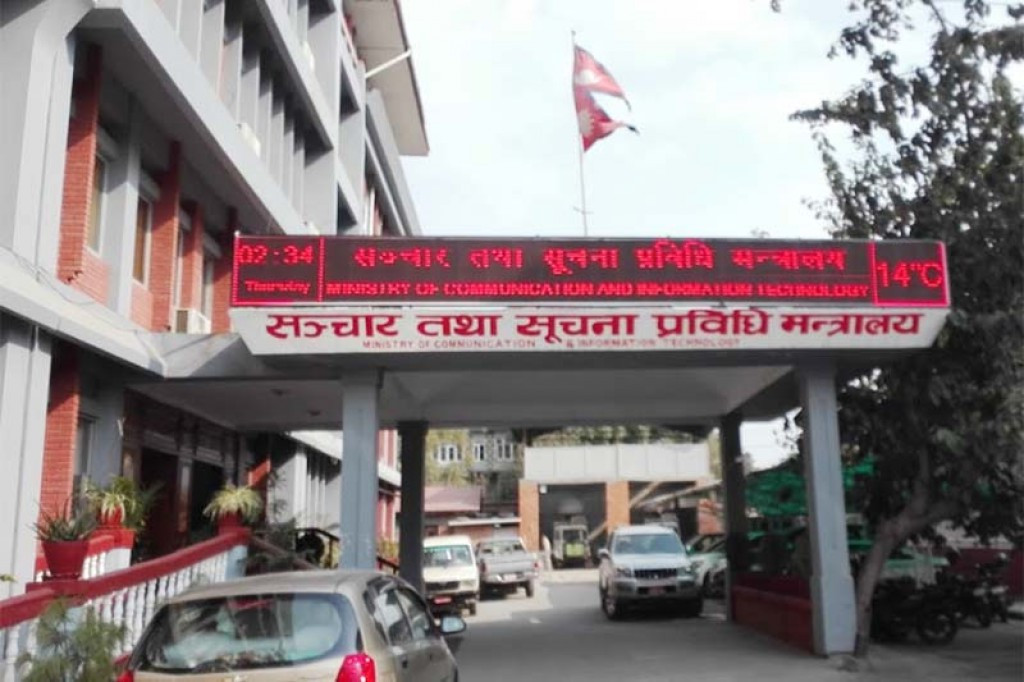




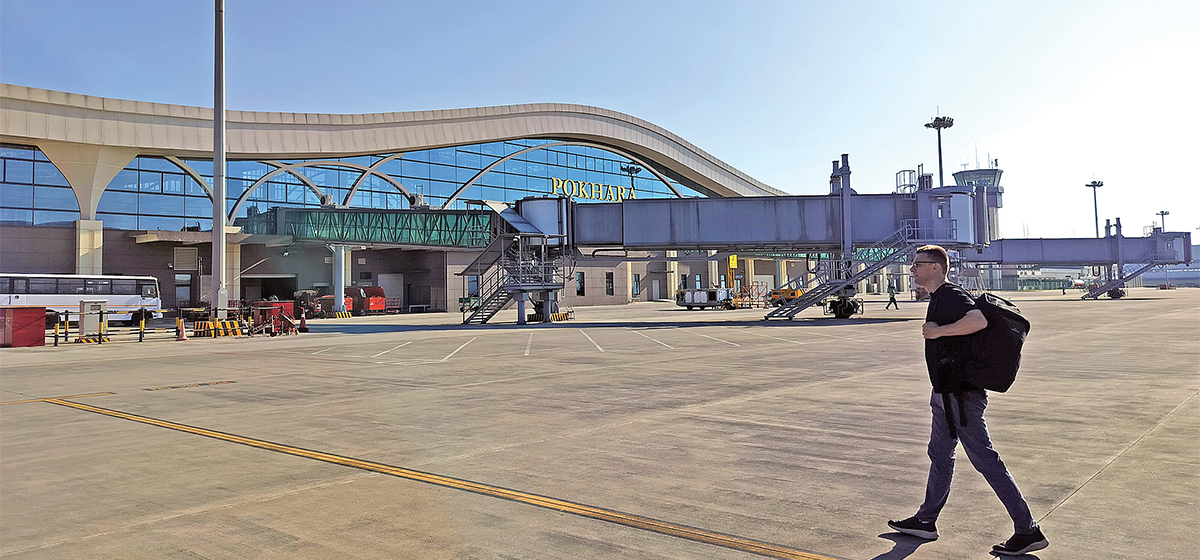
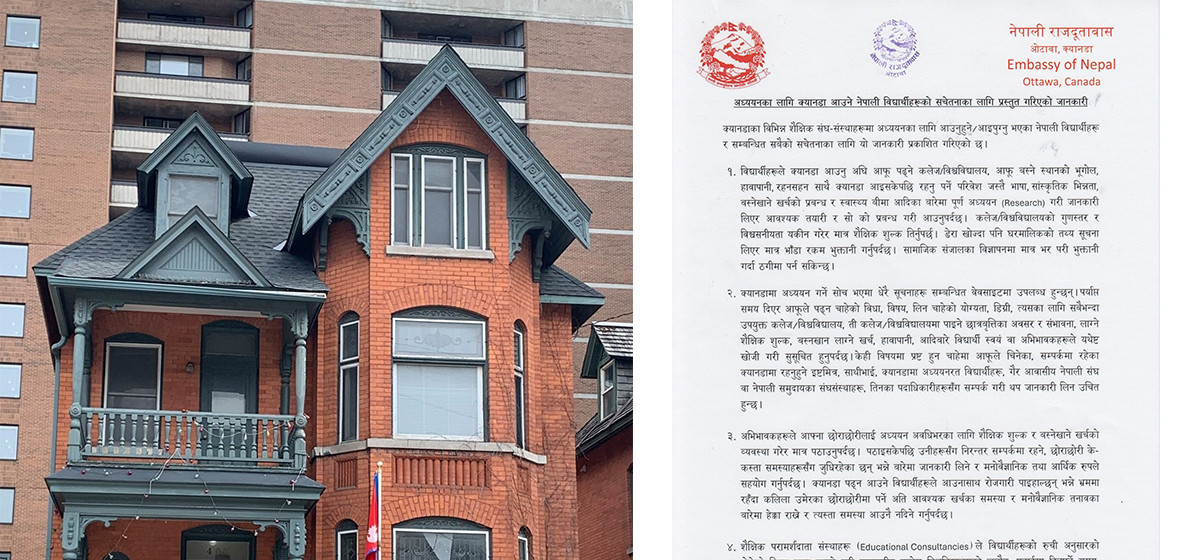





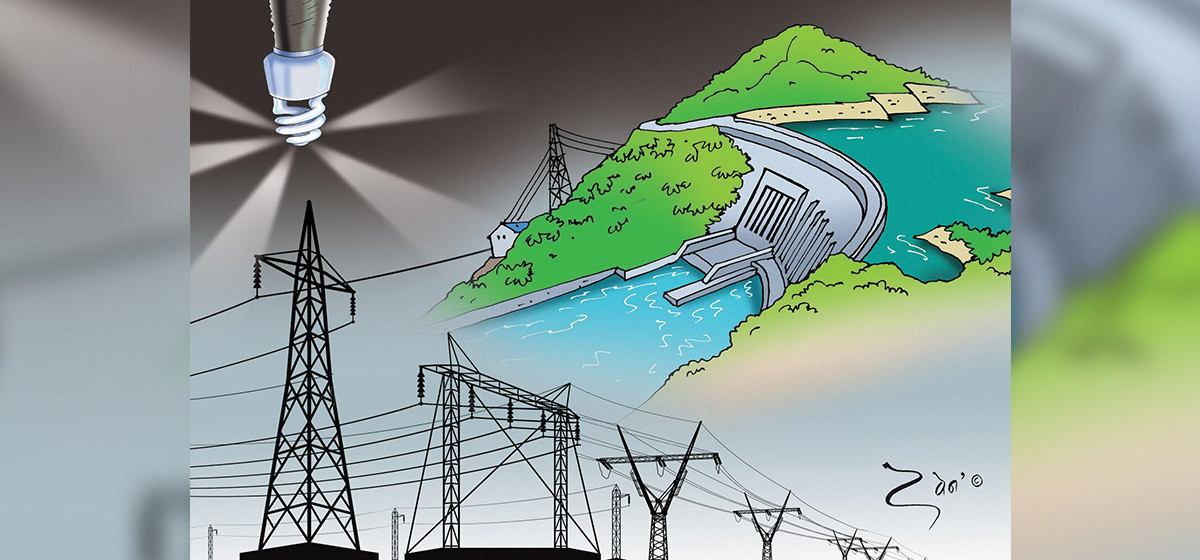
Leave A Comment